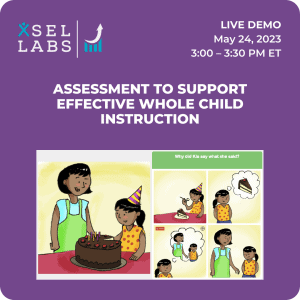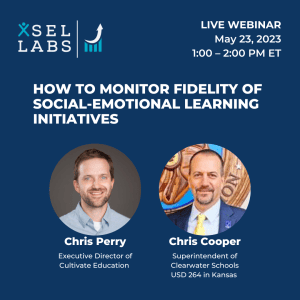What SEL Looks Like in District Strategic Plans
Many school districts around the country have made student social and emotional wellness a priority. Some call it social and emotional learning (SEL) and focus on things like problem-solving and self-management. Others call it “Whole Child Development” and focus on things like student engagement. Still, others focus on student mental health and well-being. Many strategic plans also have “portraits of a graduate” that describe the characteristics of a graduating high school senior—these portraits inevitably describe social and emotional wellness as a key piece.
Why SEL Shows Up in Strategic Plans
Why are these goals in district strategic plans in the first place? In brief, SEL matters. For example, we know that teaching social and emotional learning skills:
- Prevents behavioral and mental health problems;
- Leads to more positive behavior;
- Leads to less disruptive behavior;
- Helps students to be ready to learn; and
- Improves test scores.
Beyond these immediate benefits, when K–12 education is in a young adult’s rear-view mirror, these skills are strongly associated with success in seeking, keeping, and thriving in outcomes as wide-ranging as jobs and marriages and with constructive participation in civic life. Some skills seem particularly important. For example, self-management in early childhood is associated with lifetime earnings, relationship quality, health, and even lifespan.
The Superintendent: Accountable for the Plan
So there are good reasons these goals are in district strategic plans. But who is accountable for meeting these goals?
As the steward of a district’s strategic plan, the superintendent and their cabinet are responsible for turning goals and aspirations into reality and are accountable to the school board for reporting progress towards those goals. When the superintendent reports the “state of the students” to the board, they describe progress towards plan goals.
For example, the plan might describe goals for graduation rate, participation in AP coursework, and state reading proficiency rates. A good plan will have SMART goals, such as, “By 2025, 80% of third-grade students will meet or exceed state reading proficiency standards.” What about social and emotional wellness priorities in strategic plans? We see similar kinds of SEL goals. They read a lot like the academic goals and usually look something like this: “By 2025, 80% of students will demonstrate age-appropriate social and emotional competencies.”
The Superintendent’s Challenge: Describing the State of the Students
Returning to the superintendent’s charge, to describe the “state of the student,” imagine a school board meeting in which the superintendent takes the floor and says, “I’m pleased to report that since last year, graduation rates have improved by 7%; in response to our new open advanced placement enrollment policy an additional 15% of high school students were enrolled in and passed at least one AP class; in elementary and middle school, reading proficiency rates have improved by 12% and 8% respectively.”
Measuring Social and Emotional Wellness Poorly
What happens when they get to the student wellness part of the report? Most often, the superintendent will cite changes in suspensions or office discipline referrals (ODRs). Or maybe they will describe a life skills curriculum that has just been adopted. Or maybe they administered a student survey and can report on students’ perceptions of school or their own skills.
In response, an astute board would ask (or at least wonder) why, in contrast to academic goals, data on social and emotional wellness is so vague. Reporting on ODRs as an indicator of social and emotional development is like reporting only the number of students that failed a reading assignment as an indicator of reading skill. Describing a life skills curriculum is just ducking the question of student progress.
Reporting survey results might be getting closer. But imagine if educators used student surveys as an indicator of reading proficiency: “I’m pleased to report that 95% of students believe that they are good or excellent readers.” The board would not accept that. In the same way, reporting that 95% of students rate their self-management as excellent leaves one wondering how well-developed, in fact, student self-management is.
How to Do It Better
Some might object that social and emotional wellness is mushy and hard to assess, so we should not expect rigor in its assessment. In fact, social and emotional wellness is as measurable as reading or math. In kindergarten through eighth grade, xSEL Labs offers direct assessments of social and emotional competencies that require students to demonstrate what they know and can do, providing a more objective assessment of their social and emotional learning skills. We also offer climate surveys assessing student perceptions of the conditions of learning.
With these assessments, the superintendent can say, “I’m happy to report that the percentage of elementary students scoring in the average range or above on a rigorous assessment of social and emotional skills increased by 8%. Furthermore, by focusing more on cooperative learning strategies and academic teamwork, the percentage of students who report that other students care about them has increased from 63% to 84%.”
Bottom line: If social and emotional wellness is in your district’s strategic plan, measure wellness well and report progress with rigor.



